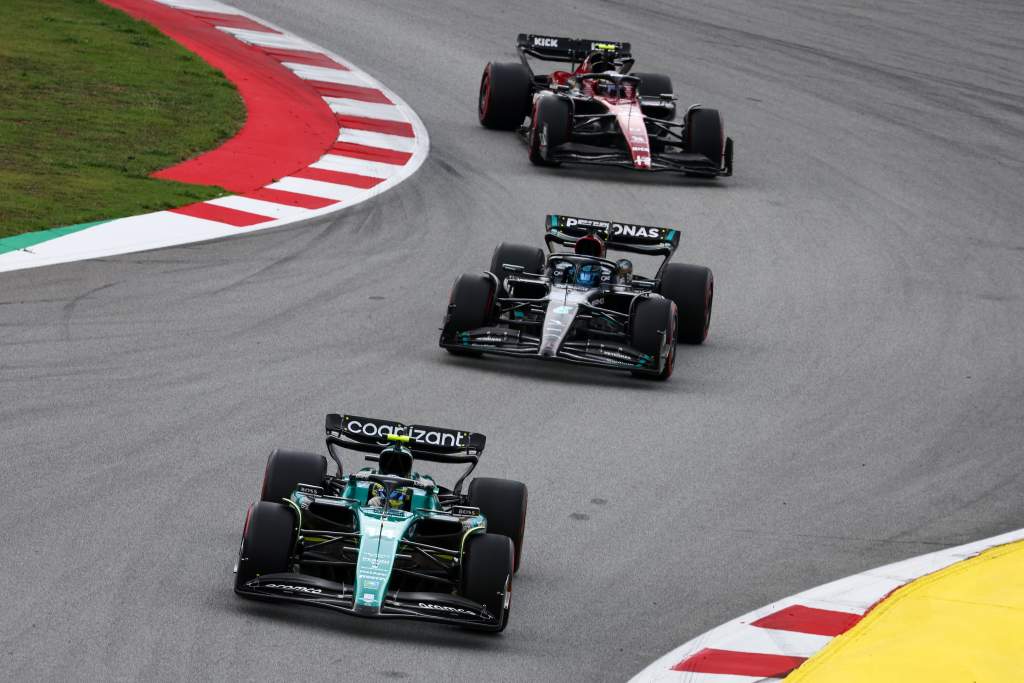Up Next

The commonality of power unit, gearbox and rear suspension meant even Mercedes team principal Toto Wolff suggested a study of the Aston Martin AMR23 could play a part in pinpointing the new direction it needed to take. But now the upgraded Mercedes W14 has hit the track showing promising form in the Spanish Grand Prix, the true inspiration that should be taken is Aston Martin’s own turnaround in terms of the leap forward made this year.
Aston Martin’s transformation from tailender to consistent frontrunner started when it committed to a switch of car concept early last season. Its progress is therefore an indicator of what gains can be made after such a change, albeit with the cautionary note that making gains from near rock-bottom given it had only the ninth-fastest car in the early stages of last season requires picking lower-hanging fruit than is available for Mercedes.
Aston Martin was in the same boat as Mercedes early last year, struggling badly with porpoising and unable to unleash the prodigious theoretical performance it was sacrificing in order to contain the problem by running the car higher than intended.
If anything, the AMR22 was more troubled given its tendency to damage the floor by smashing it into the track surface. While the aerodynamic approaches were disparate, with Mercedes running its ‘zero-sidepod’ concept and Aston Martin a far bulkier concept, the broad situations were similar.
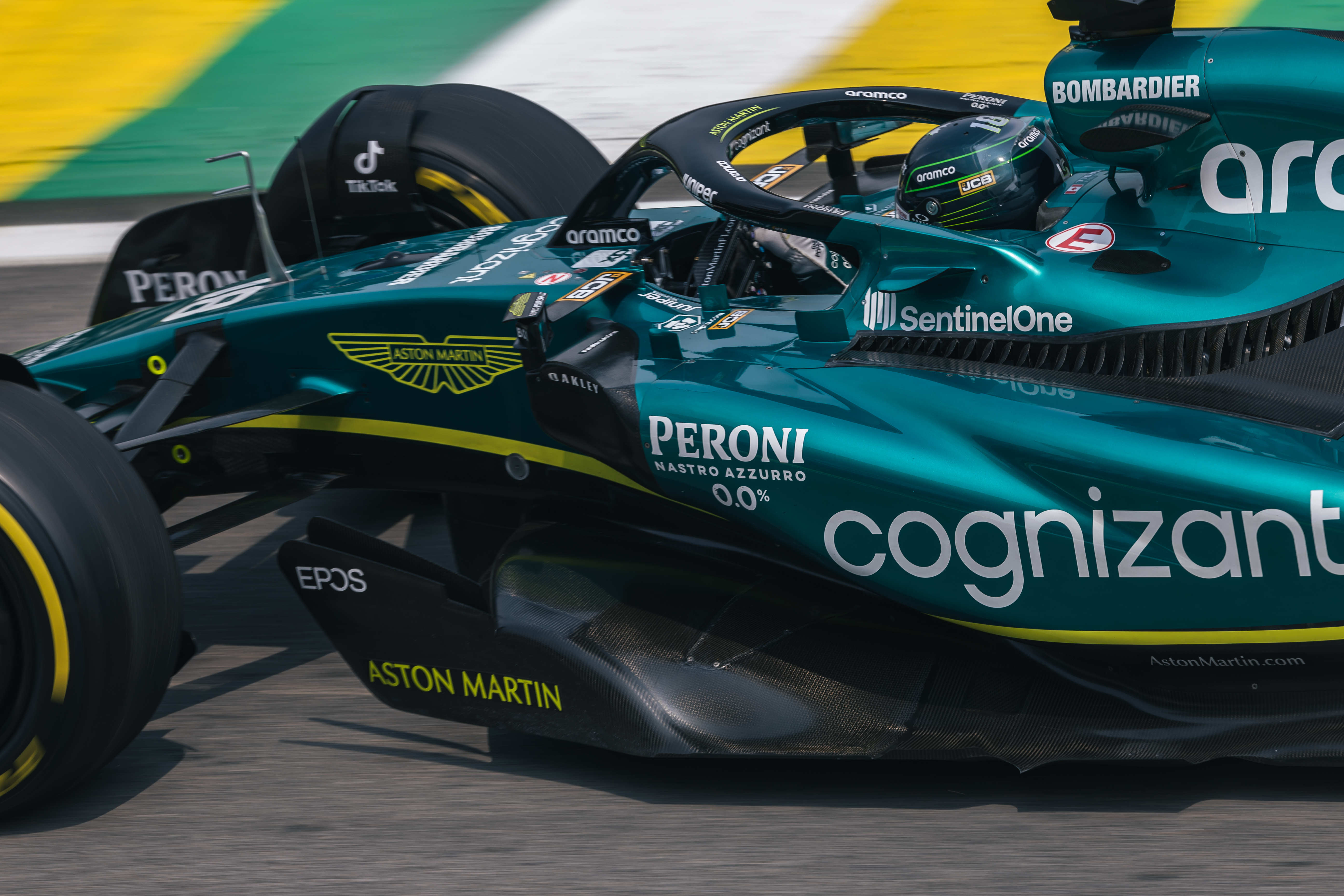
That changed when Aston Martin introduced a major upgrade package for the sixth round of the season in Spain that transformed the sidepod and floor package. This proved controversial given the superficial similarity to the Red Bull design, with Red Bull questioning the origins of the package as former employee Dan Fallows had started work as Aston Martin technical director in early April. But Aston Martin had been working on parallel programmes for some time.
“In the development phase of the ’22 car, we very much went two different routes and then one route we parked and another seemed to be really good,” said Aston Martin performance director Tom McCullough when asked about last year’s concept change.
“We then took the car to the track and the bouncing, porpoising was horrendous. We really tried to get on top of that porpoising, but everything we were doing wasn’t making big enough steps without losing too much performance. So we kept going down the route of losing a lot of performance to stop the porpoising, but we never seem to be able to do both.
“Then we went back to the other philosophy, which on paper was worse but when you put it to the car, the first time we ran it in Barcelona, we had no porpoising. And from then you started learning and tuning.
“It helped that we designed the car with two different regimes and layouts, the chassis was designed to accept both. We got a lot of data from both ways and we just accepted that what we’ve done, we couldn’t get on top of the porpoising so we had to switch.
“Pretty easy for us really, at that point, especially also because the car at the time, the Red Bull and a bit the Ferrari had gone that other philosophy and you see they’re competitive and not porpoising as badly. That also makes you think, let’s crack on with the idea.”
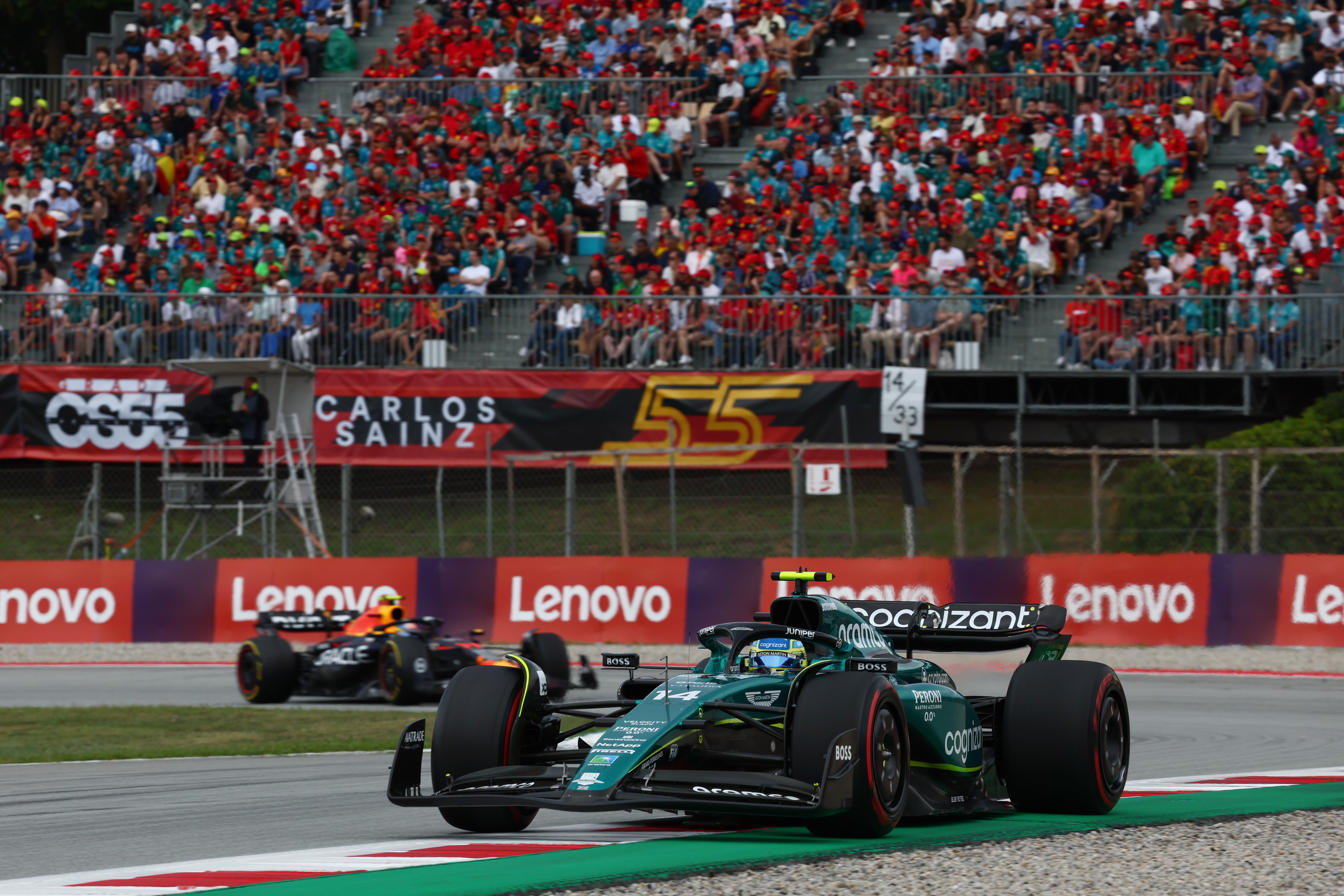
This was followed by further tweaks at the British Grand Prix, four races later. Subsequent changes were limited given the constraints of the cost cap, although Aston Martin did introduce its innovative rear-wing endplate geometry, since outlawed, for the Hungarian Grand Prix.
The downside of this approach was that Aston Martin was effectively back to zero. During the 2022 Spanish Grand Prix weekend, chief technical officer Andrew Green characterised it as effectively a launch car. Later that year, he went further and said he “wouldn’t even have classified it as a launch-spec car, it was lower than that”. But it formed the foundation for the progress that was to follow.
“The race six car was incredibly underdeveloped,” Green told The Race last year. “It was a first stab. You wouldn’t normally have released a car in the way we released it for race six because it needed more development, a lot more development.
“It was very immature and the race-10 package was to try and iron out some of those immaturities. We found quite quickly that we were quite limited in a lot of areas with that race-six car but by that stage, it was done and the budget was spent. Our focus had moved really over to ’23.”
While the design focus turned to the 2023 car that has proved so competitive so far this season, Aston Martin made genuine progress on track. But it took time, ultimately transforming a car that was, on average, 2.4% off the pace across the first five race weekends into one 1.75% down in the final five races. Considering the pace of development at the front, particularly the progress made by benchmark Red Bull, that was impressive. It allowed Aston Martin to come within a point of recovering to sixth place in the constructors’ championship, missing out only on countback to best results in a tie with Alfa Romeo.
Extend that progression into this year and it’s even more impressive. While the AMR23 looks dramatically different to last year’s car, it is an evolution of the undercooked direction of last year.
“The philosophy started really in March last year and this car is an evolution of that philosophy,” said McCullough. “The car that we brought to Spain, that philosophy, has just been developed throughout last year, then again, continuing over the winter some quite big steps [were made] because during the year there’s only so much you can change because of cost cap.
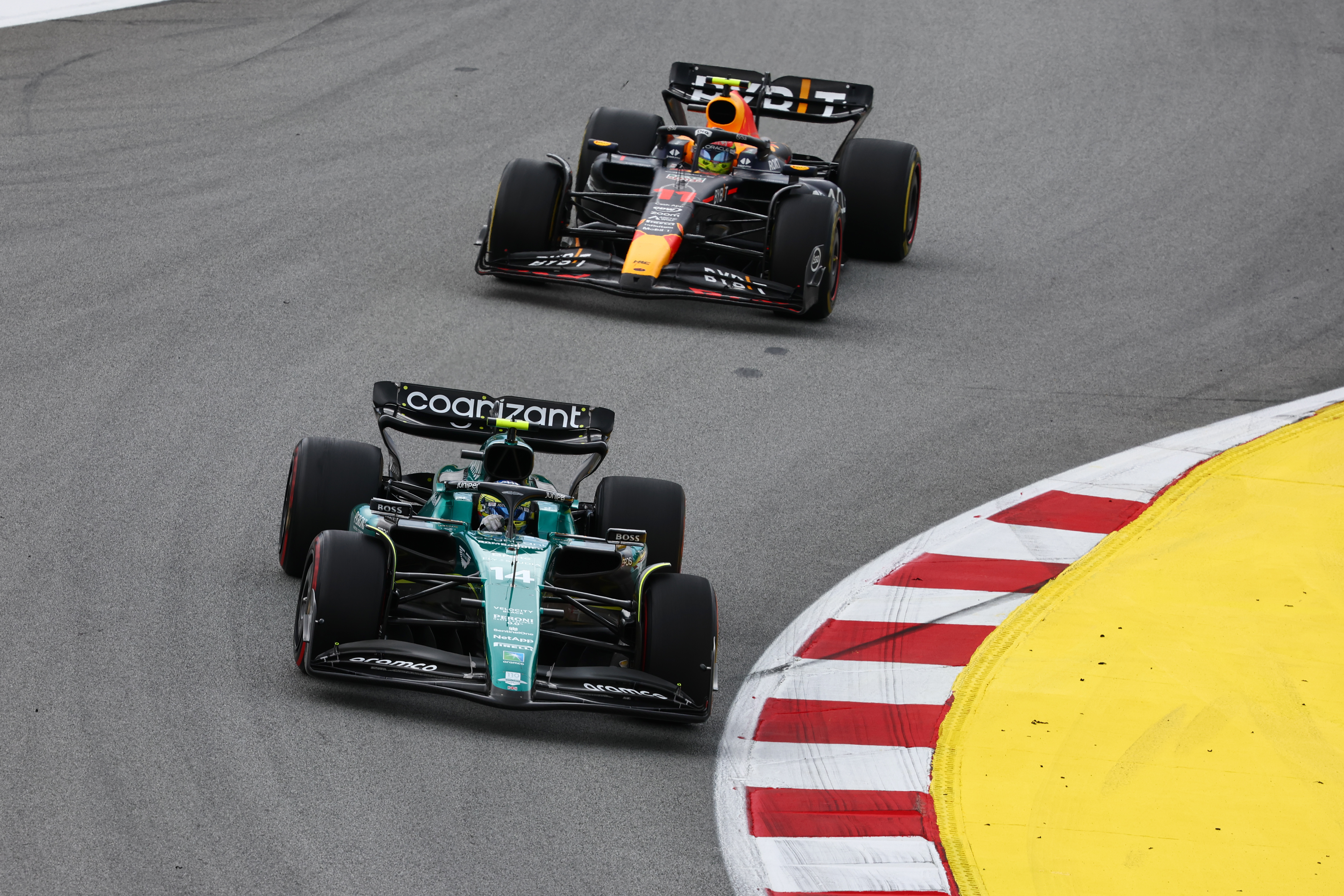
“But we tried to give ourselves the freedom to keep developing the car. So when we’re designing the chassis, the floor, the radiator layout, the idea was to give ourselves the volume potential just to keep developing the car and so far that’s working pretty well.”
So what does this teach us about Mercedes? While the details vary and the upgrade package it introduced at Monaco is less immature than the version Aston Martin started with, it illustrates the payoff that is possible. Crucially, it also defines the timelines.
For all the progress last year, Aston Martin was never more than a minor points car in the second half of the season. It wasn’t until 2023 and the AMR23 that it could fully realise this concept. A glance at the AMR22 compared to its successor lays bare the extent of the improvement.
Mercedes is in a similar position insofar as it, too, is locked out of some changes. It has the cost cap to contend with, something that prevents major architectural changes such as producing a new monocoque with the cockpit position shifted rearwards and a rear suspension overhaul. Both are likely needed, potentially along with additional changes to re-optimise the packaging inside the sidepods and engine cover – albeit with the caveat the power unit designs are homologated – before Mercedes can fully realise this concept.
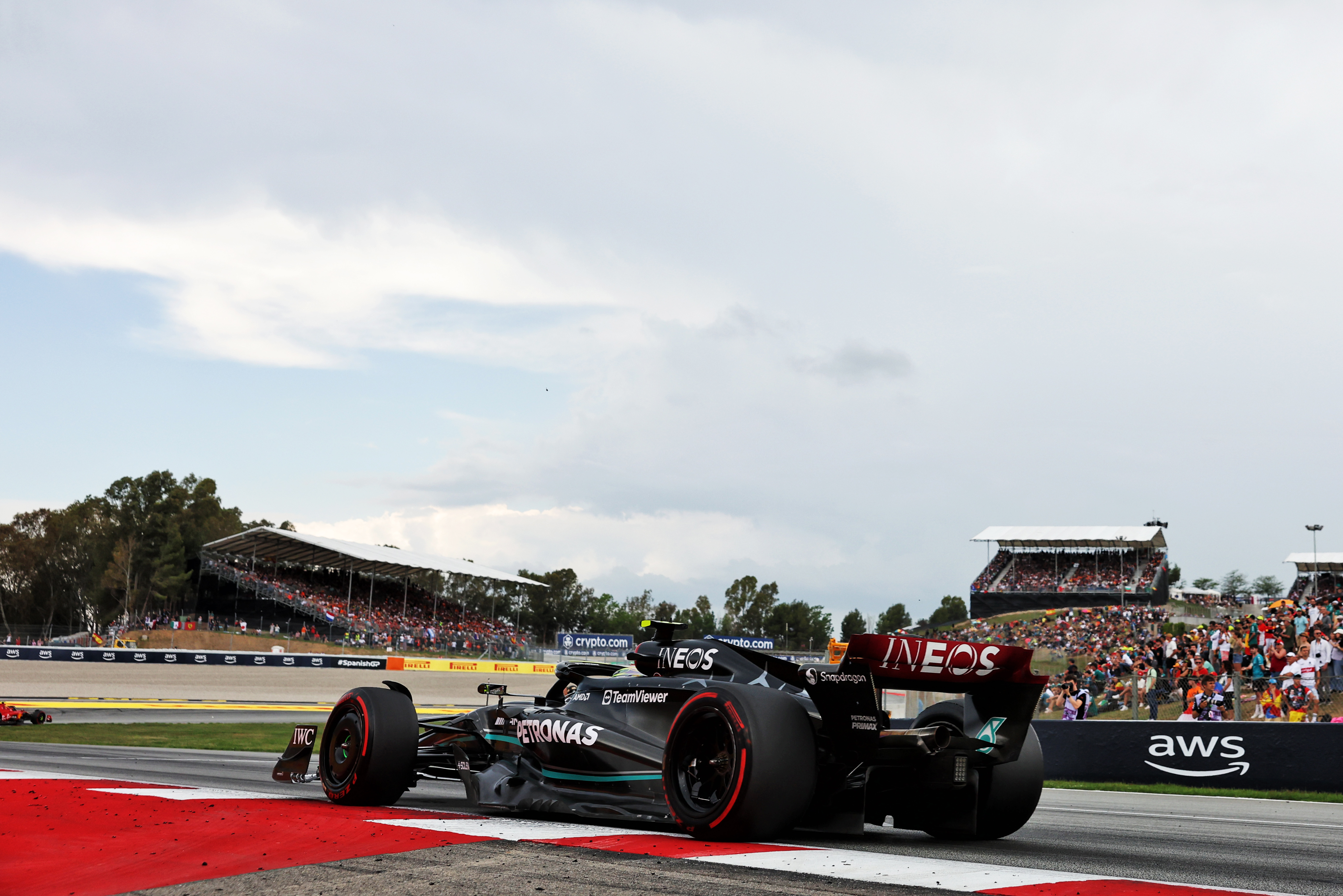
As team principal Toto Wolff has pointed out repeatedly, control of the mechanical platform will be a key step. This is also an area, given it runs Mercedes suspension, where Aston Martin can still gain – at the rear end in particular.
While the upgraded Mercedes is a far more competitive design than the Aston Martin change of direction introduced at a similar time last year, the fact it took until this year for the Silverstone-based team to fully realise the potential of that direction shows what might be possible for Mercedes at the start of next season. As trackside engineering director Andrew Shovlin recently said, the way the car performed in Barcelona has defined the team’s path.
The key now is that Mercedes makes good progress during the rest of 2023, as Aston Martin did last year, then finds the right formula to take a leap forward next season. A step that will require it not only to catch up with where Red Bull ends the season, but the stride Red Bull then inevitably makes with its 2024 car.

